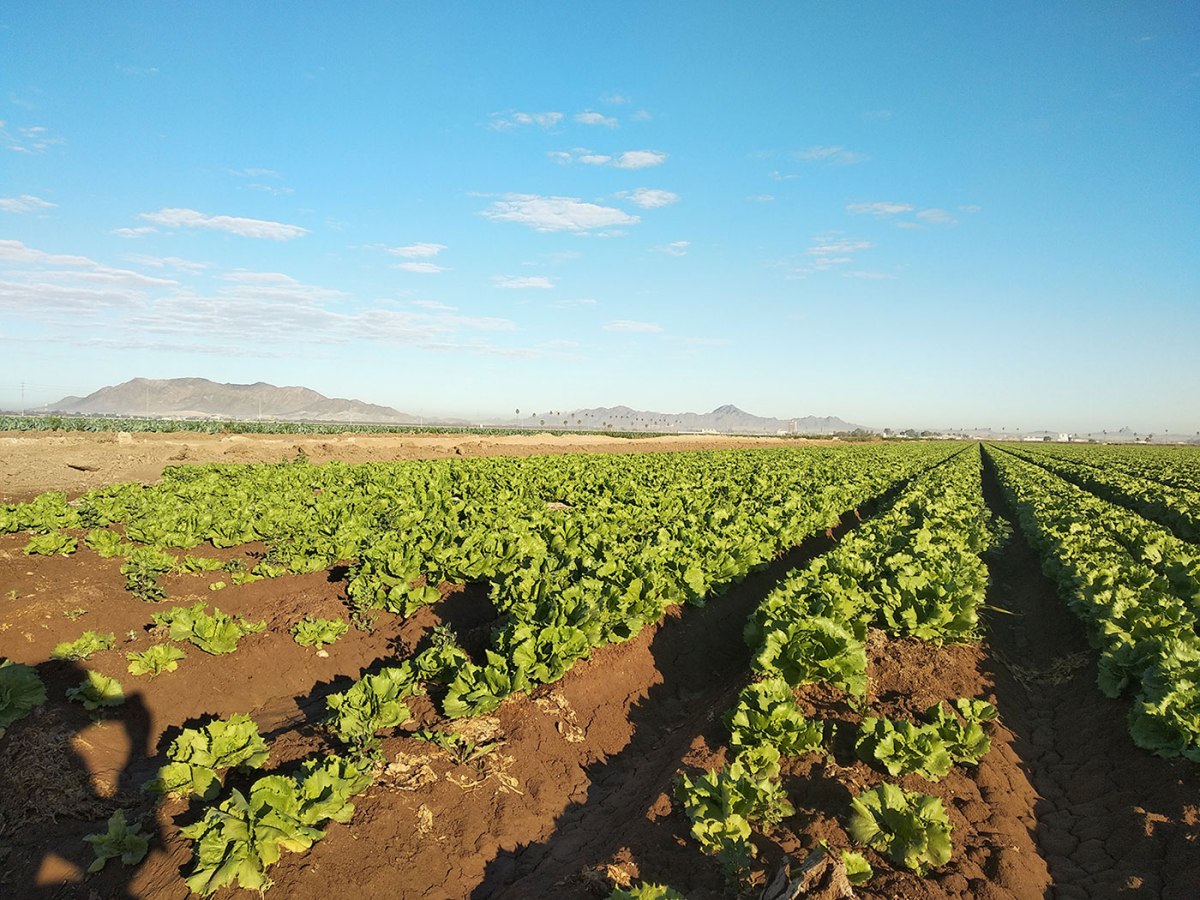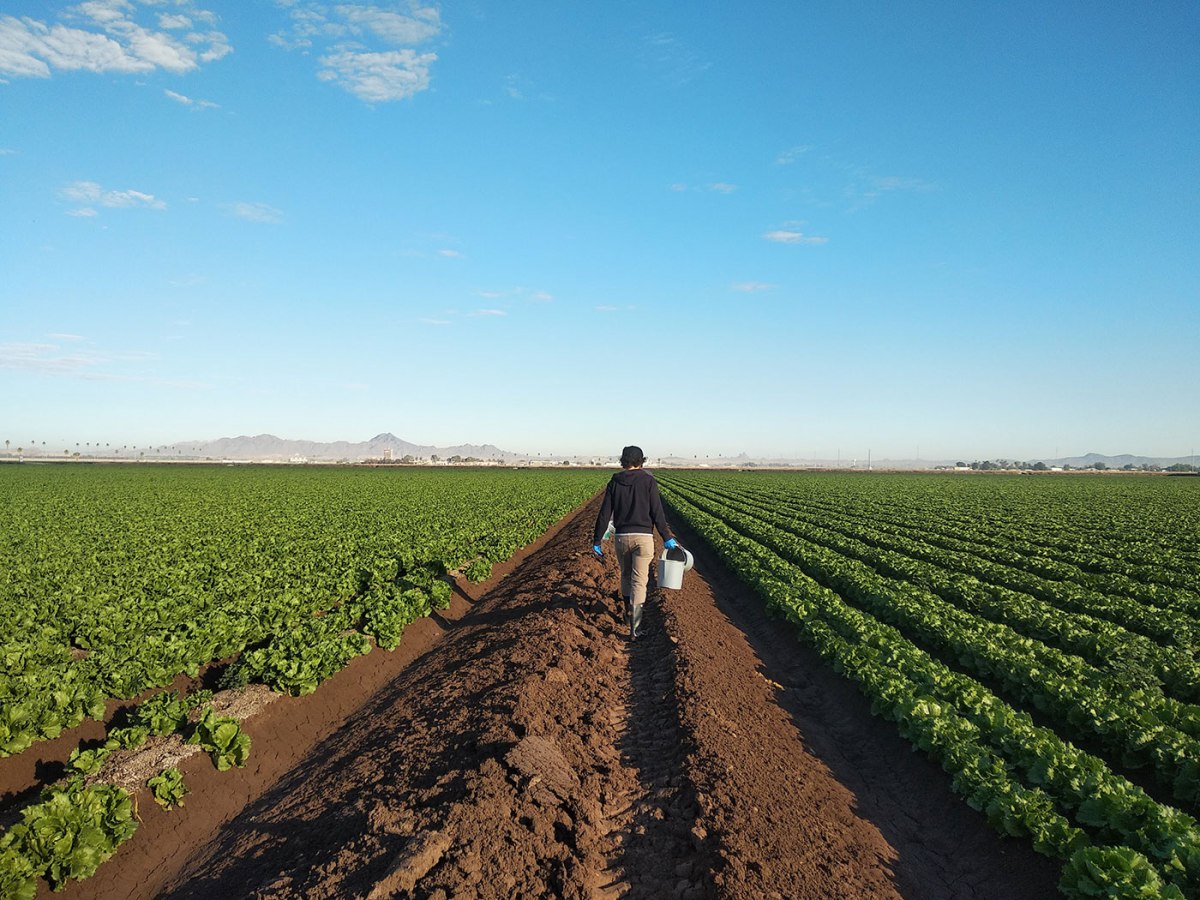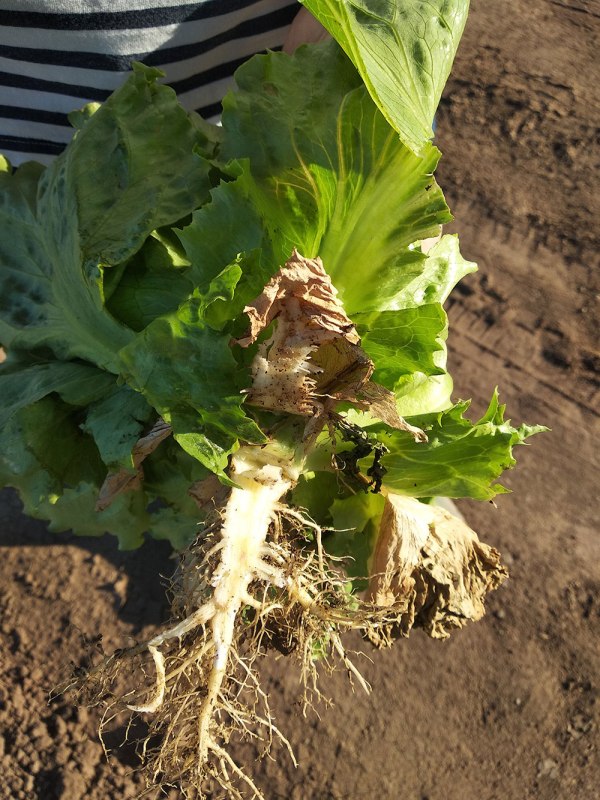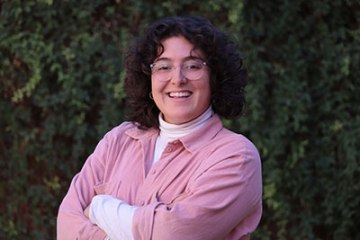A Life of Science: A Series by New Scientists
Understanding the dynamics of soil microbiomes to ensure sustainable winter agriculture.
Every New Year’s Day of my childhood, teenage years, and early 20s, I would wake up and join my mom in the preparations for her absolute favorite New Year’s dish. She would have the radio on, and we would listen to the entire Vienna Philharmonic New Year’s Concert as we rolled the stewed beef and tomato sauce filling into dozens of slippery squares of boiled pasta to make canelones. As I grew older, I started neglecting my sous chef tasks to sit in front of the TV and study the images from the concert, including the floral arrangements, which were quite impressive. I was fascinated by the dissonance that existed between the image I would see on the screen, a zoom-in on one musician playing their instrument, and the sound I could hear from the speakers, a complex musical piece that was only possible through the collective action of the whole orchestra in perfect coordination.
I have now moved from rainy Vigo, Spain to sunny Tucson, Arizona, 5,000 miles away from my mom’s canelones. In the move, I swapped the yearly study of the Vienna Philharmonic—although I still play it on YouTube every New Year’s Day—for the continuous study of another orchestrated group: the soil microbiome. The soil microbiome’s coordinated action does not make any sound, at least not that we can hear with our human ears. Instead, the individual behavior of each microorganism, and its interactions with its environment, such as soil mineral particles or plant roots, sustain the soil system. We humans benefit from this system because the microorganism’s orchestra supports the food that we grow.
Soils are alive and can regenerate. The microorganisms that live in the soil are constantly consuming chemicals that other organisms can’t use, and producing other chemicals that other organisms, such as plants, can feed on. However, this balance between consumption and production has been disrupted by the way humans overexploit the soil. Overuse, combined with ever-more-prevalent changes in the climate, are pushing the soil system so far that the microorganisms are unable to keep the show going. The soil system crumbles, and the soil becomes eroded. For example, conventional agriculture, which relies heavily on the use of tillage and chemical fertilizers, erodes soils at almost twice the rate that soils can regenerate. Due to this, more of the Earth’s land surface every year becomes irreversibly depleted of nutrients for plants and other organisms in a process known as desertification. The danger is that at some point, soil desertification will be so prevalent that we will not have enough fertile soil left to produce the amount of food we need to meet human demand.

Photo by María Touceda-Suárez.
This past year, my colleague Dr. Gabriele Schiro and I undertook a research trip to one of the U.S.’s agricultural hubs: Yuma, Arizona. Yuma is known as the sunniest city in the world, but it also has another nickname: the winter lettuce capital of the U.S. Yuma County is the largest provider of lettuce in the U.S. during the winter months due to its warm desert climate and a constant supply of water from the Colorado River.
We rented an official university car and drove four hours from Tucson across one of the most isolated landscapes I have ever seen. At some point we even saw a sign, Next Services 200 Miles, something my city-girl brain could not assimilate. After three hours of driving along creosote and ocotillo, the view changed radically. Left and right, endless rows of deep green lettuce, spinach, and other leafy greens grew over a dark brown soil. This pattern extended as far as the eye could see, only interrupted by mountain ranges or the horizon itself. We had reached Yuma.
Gabri and I were driving to the furthest corner of Arizona for a concerning reason. The lettuce fields of Yuma have been threatened by an increasingly prevalent disease over the past five years. The organism that causes this disease is called Fusarium oxysporum sp. Lactucae, and the disease is commonly referred to as fusarium wilt. Every year, new fields develop fusarium wilt, which results in plants rotting and dying, and has no known cure. The disease is also found in the other major hubs of winter vegetable production, California and Florida, therefore threatening the entire winter-growing industry, the communities whose livelihoods depend on the industry, and the supply chains that we all benefit from every winter. Fusarium is a fungus commonly found in the soil. In healthy soils, the different organisms that form the soil microbiome interact with each other. They cooperate, compete, prey on one another, or even form tight dependencies with one another. These interactions, just like the different instruments in an orchestra, have a dynamic equilibrium: sometimes one instrument acquires more importance for a moment and the musical piece changes, but this tends to be ephemeral and soon the orchestra balances out.

Photo by María Touceda-Suárez.
The same tends to occur with the microorganisms in a community. However, sometimes external stressors, such as excessive farming and a rise in temperature, can break the balance, and some microorganisms take over the concert, stifling ecosystem dynamics. This may be the case of Fusarium oxysporum. The fungus may become dominant in stressed soils. Once dominant in the soil, unrestrained, Fusarium may infect the plants.
This was our hypothesis—the reason why Gabri and I drove to Yuma. We collected samples from fields that had been affected by Fusarium, and fields that had not been infected or didn’t show the disease. Our goal was to study the soil microbiome to understand the relationship between the orchestra of microorganisms and the appearance of this disease. Was Fusarium acting like a solo artist that got excited and took the solo a bit too long? Or was Fusarium a complete stranger to the orchestra that invaded the show? Can we somehow support the rest of the members of the soil orchestra so they can steal back the show and return the soil and the lettuce to full health? Understanding how and why the disease originates might help us find a way to prevent it.
In fact, our preliminary results have shown that the composition of the infected soil microbiome is completely different, which confirms our hypothesis. In the next stage of our study, we will use biological computing techniques to find genes in the rest of the soil microorganisms that could help us combat Fusarium oxysporum, and hopefully eradicate it from the lettuce fields of Yuma.

Photo by Photo by María Touceda-Suárez.
The symphonies that soil microorganisms play are silent, but incredibly important. They support the ecosystems we live on. Understanding the dynamics of these compositions, their essential elements, and their most important instruments could allow us to truly establish a sustainable relationship with our soils.
Our soils are currently in crisis—large areas of fertile soil have been overused, exhausted. This threatens the livelihoods of the communities that directly interact with those soils. It also threatens the basic resources and supply chains we all depend on. But it is not too late for us to reverse the situation. Our success will depend on our ability to listen to the soil microbiome, and to ensemble with it. Developing a long-lasting, harmonious relationship with our soils and their microbiomes is the only way we can ensure the continuity of the natural systems we live with and grow our food on, from the lettuce fields of Yuma to the ingredients my mom uses every year to make her delicious canelones.
 María (Mery) Touceda-Suárez is a Ph,D, student at the University of Arizona’s Department of Environmental Sscience. Apart from researching soil microbes, Mery enjoys cycling, working to make cities more bike friendly and sustainable, reading, making pottery, and connecting with nature.
María (Mery) Touceda-Suárez is a Ph,D, student at the University of Arizona’s Department of Environmental Sscience. Apart from researching soil microbes, Mery enjoys cycling, working to make cities more bike friendly and sustainable, reading, making pottery, and connecting with nature.
Header photo of winter lettuce fields in Yuma, Arizona by María Touceda-Suárez.
- SEO Powered Content & PR Distribution. Get Amplified Today.
- PlatoData.Network Vertical Generative Ai. Empower Yourself. Access Here.
- PlatoAiStream. Web3 Intelligence. Knowledge Amplified. Access Here.
- PlatoESG. Carbon, CleanTech, Energy, Environment, Solar, Waste Management. Access Here.
- PlatoHealth. Biotech and Clinical Trials Intelligence. Access Here.
- Source: https://www.terrain.org/2024/a-life-of-science/a-microbial-ensemble/

